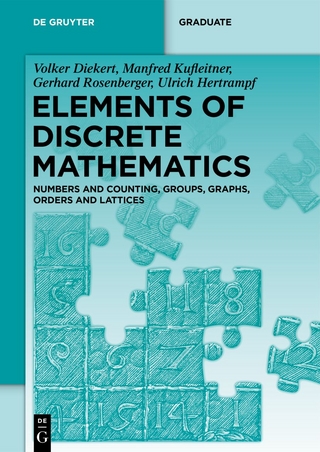
Combinatorial Network Theory
Seiten
1995
Springer (Verlag)
978-0-7923-3777-5 (ISBN)
Springer (Verlag)
978-0-7923-3777-5 (ISBN)
A basic problem for the interconnection of communications media is to design interconnection networks for specific needs. Chapter 3 addresses Bruijn digraphs, Kautz digraphs, and their generalizations, which are candidates for networks of minimum diameter and maximum connectivity with given degree and number of nodes.
A basic problem for the interconnection of communications media is to design interconnection networks for specific needs. For example, to minimize delay and to maximize reliability, networks are required that have minimum diameter and maximum connectivity under certain conditions. The book provides a recent solution to this problem. The subject of all five chapters is the interconnection problem. The first two chapters deal with Cayley digraphs which are candidates for networks of maximum connectivity with given degree and number of nodes. Chapter 3 addresses Bruijn digraphs, Kautz digraphs, and their generalizations, which are candidates for networks of minimum diameter and maximum connectivity with given degree and number of nodes. Chapter 4 studies double loop networks, and Chapter 5 considers broadcasting and the Gossiping problem. All the chapters emphasize the combinatorial aspects of network theory.
Audience: A vital reference for graduate students and researchers in applied mathematics and theoretical computer science.
A basic problem for the interconnection of communications media is to design interconnection networks for specific needs. For example, to minimize delay and to maximize reliability, networks are required that have minimum diameter and maximum connectivity under certain conditions. The book provides a recent solution to this problem. The subject of all five chapters is the interconnection problem. The first two chapters deal with Cayley digraphs which are candidates for networks of maximum connectivity with given degree and number of nodes. Chapter 3 addresses Bruijn digraphs, Kautz digraphs, and their generalizations, which are candidates for networks of minimum diameter and maximum connectivity with given degree and number of nodes. Chapter 4 studies double loop networks, and Chapter 5 considers broadcasting and the Gossiping problem. All the chapters emphasize the combinatorial aspects of network theory.
Audience: A vital reference for graduate students and researchers in applied mathematics and theoretical computer science.
1 Additive Group Theory Applied to Network Topology.- 2 Connectivity of Cayley Digraphs.- 3 De Bruijn Digraphs, Kautz Digraphs, and Their Generalizations.- 4 Link-Connectivities of Extended Double Loop Networks.- 5 Dissemination of Information In Interconnection Networks (Broadcasting & Gossiping).
| Erscheint lt. Verlag | 31.12.1995 |
|---|---|
| Reihe/Serie | Applied Optimization ; 1 |
| Zusatzinfo | VIII, 214 p. |
| Verlagsort | Dordrecht |
| Sprache | englisch |
| Maße | 156 x 234 mm |
| Themenwelt | Mathematik / Informatik ► Mathematik ► Graphentheorie |
| Mathematik / Informatik ► Mathematik ► Wahrscheinlichkeit / Kombinatorik | |
| ISBN-10 | 0-7923-3777-8 / 0792337778 |
| ISBN-13 | 978-0-7923-3777-5 / 9780792337775 |
| Zustand | Neuware |
| Haben Sie eine Frage zum Produkt? |
Mehr entdecken
aus dem Bereich
aus dem Bereich
Numbers and Counting, Groups, Graphs, Orders and Lattices
Buch | Softcover (2023)
De Gruyter (Verlag)
64,95 €
